Matador Network's Blog, page 1009
September 20, 2019
Best volcano hikes in Nicaragua

Nicaragua is famous for its dramatic landscapes and known as the “land of lakes and volcanoes.” There is a chain of some 19 volcanoes, part of the Central American Volcanic Arc that runs north to south down the country. Regardless of whether or not they’re active, many of the volcanoes have hiking trails that offer a look into the different ecosystems and endemic flora and fauna, as well as jaw-dropping views. They are also a cool way to get in some exercise — not many people can say they hiked along a volcano.
The terrain on each volcano varies, which affects the hike’s difficulty, distance, and the time it takes to complete. Some require the aid of a guide and serious hiking gear; others are gentle enough to do on your own with just a good pair of shoes. Even if you’re not the most physically fit person, some hikes are relatively easy or offer several places to take a break so there’s no excuse to avoid one of the best parts of this tropical country. Here are four of the coolest volcano hikes you can do in a day.
1. Cerro Negro
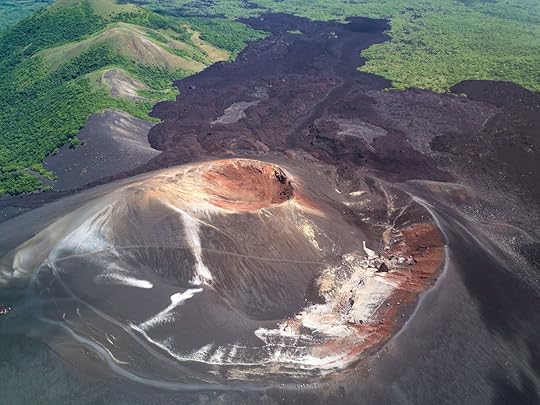
Photo: PixieMe/Shutterstock
A relatively young volcano in Central America, Cerro Negro is unique in that there is no greenery or vegetation to be found anywhere on it. Its color is somewhere between black and dark gray, which is fitting considering its name translates to “black hill.” Hiking to the roughly 2,000-foot top can take anywhere between 45 minutes and an hour. The views at the top are otherworldly, and hiking around sunset makes the experience even more idyllic. Because the volcano is still active — with its last eruption occurring in 1999 — the ground by the crater is warm, and gas can be seen emitting from small holes. It’s a moderate hike, but it is a constant ascent, and the way up is extremely rocky, so having shoes with a good grip is a must. Once at the top, the ground plateaus, so it’s easier to walk around.
While you can hike back down the same way you came, popular among both Nicaraguans and tourists alike is volcano boarding. One of Cerro Negro’s sides is comprised of soft volcanic sand, which makes it easy for people to hop on a board and slide all the way down. It’s closer to sledding than say, snowboarding, as you’ll be sitting the entire time. Volcano boarding with a tour company is essential as it’ll provide all of the necessary gear, such as a suit, gloves, goggles, and the specific board needed for the activity. It’s important to note that should you choose to volcano board, you will have to carry all of the equipment yourself while hiking, but most companies offer porting services for a fee. While it may seem nerve-wracking, it’s surprisingly easy as you can control your speed. If you slide off the board, it’s akin to rolling in sand at the beach. Just get back on the board and you’re good to go.
Closest major city: León
2. Mombacho

Photo: Pete Niesen/Shutterstock
Mombacho is a stratovolcano that’s over 4,000 feet tall. While it’s not yet classified as extinct, it has been dormant since its last eruption in the late 1500s. Information suggests that an eruption thousands of years ago, when the volcano blew off much of its cone, was what formed the archipelago known as the Islets of Granada in Lake Nicaragua.
Mombacho is open to visitors year-round, and hours of operation are from 8:00 AM to 4:30 PM, with the last admittance being at 4:30 PM. There are two different ways to reach the summit: walking or driving. The road up to the summit is paved, but it’s incredibly steep. Hiking up to the summit will take at least two and a half hours, but driving should take around half an hour. If driving on your own, it’s recommended to bring a 4×4; otherwise, there’s a truck that takes people up to the top for a small fee, as well as various tour companies. Be sure to keep an eye out on the way — you’re likely to see a monkey or two traipsing around in the trees. At the summit, there’s a tourist information center where you can learn about the flora and fauna that can be found on Mombacho, and it’s also your last chance to use the restrooms before continuing on.
No matter how you arrived at the summit, the rest of the journey will be on foot. There are three craters available to hike around: El Cráter, El Tigrillo, and El Puma. El Cráter is the easiest of the three and can be done self-guided or with a guide, which is a small additional cost if you’re not with a tour company. It takes an hour and a half, with a distance just under a mile. El Tigrillo is a difficult hike that takes about two and a half hours to complete. El Puma is the hardest at four hours long and can only be done with a guide. Each trail has a number of miradores, or lookouts, where you can observe the crater, surrounding ecosystem, and amazing views beyond the volcano. Because Mombacho is covered by a cloud forest, it can get quite humid, so you’ll want to dress in light clothing; otherwise, no other serious equipment is needed. In addition to hiking, Canopy Tour Miravalle also offers zip-lining and canopy activities on the volcano.
Closest major city: Granada
3. Masaya
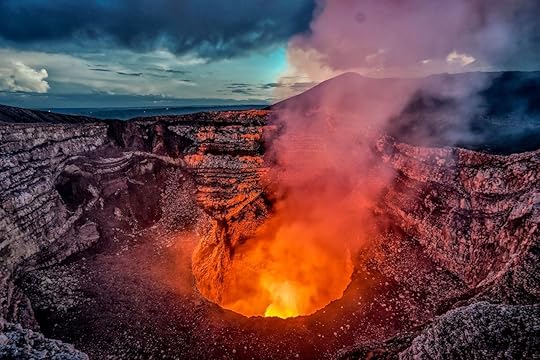
Photo: Roberto Destarac Photo/Shutterstock
Masaya is one of the more active volcanoes and is part of Masaya Volcano National Park, the first national park in Nicaragua. It’s a little over 2,000 feet tall, and the terrain on this volcano is very Mars-esque — some plants here and there, but red rocks and dirt abound. Getting to the entrance of the national park can be done via hiking or driving and, as with Mombacho, driving can be done on your own with a 4×4 or with a tour company or one of the public trucks. It’s important to note that while Masaya is typically open from 9:00 AM to 5:00 PM, hours of operation are weather dependent. For example, if there’s heavy rain in the area, it will close for several hours or even the day.
At the entrance, there are several hiking trails to different sites on the volcano; these vary in distance from just under a mile to nearly four miles. Due to volcanic activity, the only open trail at the moment is the one for the main Santiago crater, which is an easier and straightforward hike. It’s this crater, however, that offers visitors a chance to see lava. How much lava, if at all, is dependent on the time of day and the weather, and it’s popular to visit toward the end of the day when it’s getting dark out for a better chance. There are many legends about the Santiago crater, ranging from sacrificial rituals to being a gate to hell. In the 16th century, Spanish conquistadors nicknamed the crater the “Mouth of Hell” and planted a giant cross, “La Cruz de Bobadilla,” on one of its sides to expel any demonic activity.
Closest major city: Masaya, equidistant from both Managua and Granada
4. El Hoyo

Photo: Eweleena/Shutterstock
Reaching a height of almost 4,000 feet, El Hoyo is unlike any other volcano in Nicaragua. Its crater looks like a giant sinkhole — its name fittingly translates to “the hole” — and is on the side of the volcano rather than being centered. Hiking up El Hoyo has a medium level of difficulty, so it’s best for those used to hiking uphill and with a decent amount of physical fitness. The first part of the hike is devoid of much nature and shade, so it’s important to bring a hat to provide relief from the sun. Closer to the crater, the surroundings are much greener, which makes El Hoyo look unlike the active volcano it actually is. While hiking later in the day offers the opportunity to see the sunset over Lake Managua and the Momotombo volcano in the distance, it’s more common to begin the hike around 5:00 AM to avoid the harsh sun.
Closest major city: León 

More like this: 10 traditional Nicaraguan foods the world should know about
The post 4 of the coolest day hikes up volcanoes in Nicaragua appeared first on Matador Network.

How to backpack with your partner
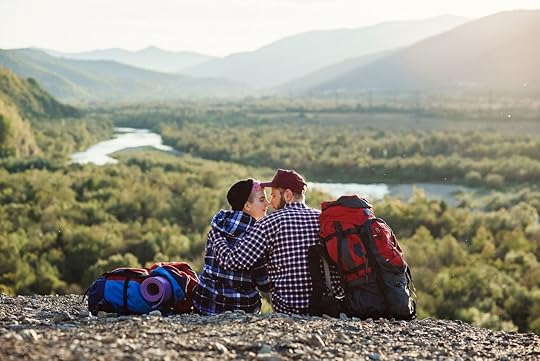
Hiking with your significant other can be incredibly fun and meaningful. You’ve got someone who has your back and gets to experience the same things you do. You’ll ooh and ahh over beautiful scenery, discuss a range of topics from evolutionary biology to the Kardashians, and team up and get scrappy when you run into snags.
Some of those snags, however, might be a little more personal.
You’re likely to have slightly different hiking styles. One hiker might have certain goals and attitudes about the “proper” way to hike. One person will be faster, or stronger, than the other person. They might want to push themselves while the other person is content to turtle their way through. Plus, backpacking can be plain exhausting, which makes it a lot harder to control your emotions when the hiking gets hard. Here are some methods to help you hike your own hike — together.
Get on the same page.
It doesn’t matter how long you’ve been together — you still can’t read minds. A little self-awareness and a lot of communication can go a long way. If either of you get cranky when you’re tired, hungry, cold, or just overall uncomfortable, establish this upfront and prepare accordingly. Maybe it means packing extra snacks, taking more breaks, or letting the slower person go in front so they set the pace. Either way, let them know ahead of time what your vices are so you know how to handle conflict.
Getting on the same page also means having the same goals. You might be done after backpacking for 15 miles, only to discover that your partner wasn’t planning on stopping for another five. Plan ahead for the entire trip on when you want to be done, how many miles you’ll need to average, and what kinds of weather might hinder your progress.
Relax your personal standards and rules.
We all have our own standards. Some hikers like to hit personal records and push themselves beyond max mental capacity. Others are determined to go into total survivor mode and become a purist about everything involving hiking and nature. This is especially true when you’re backpacking long distances and want to make the experience as wild as possible.
However, backpacking like that can be exhausting and take a toll on both of you emotionally, especially if your partner isn’t as zealous as you are. It’ll be easy to get stubborn on what you want and forget what works best for both of you. Don’t get so caught up in hiking 150 miles a week or sleeping in a tent every night, especially if it’s been raining excessively and you just need a shower. It’s really okay if you sleep in a real bed during your backpacking trip, especially if you’re thru-hiking. Your body might need it more than you realize.
Split up the weight.
Unless you and your partner weigh the exact same and have the exact same workout routine, chances are good one of you is stronger than the other. Take advantage of this. While the weaker person may be determined to prove their strength and capability (trust me, I’ve been guilty of this), it really is just better to distribute more weight to the stronger person’s pack. It’ll slow down the stronger person and make it easier for the two of you to hike together. And if the stronger person gets tired or needs to take more frequent breaks, well, you know what to do.
Be flexible about time.
A rigid schedule can increase the pressure and decrease the enjoyment of a hike. If you’ve been trying to get to each destination before sunset, there are different advantages to being flexible with your time. One partner might be more of a morning person while the other one likes to get some extra snoozes in. In a situation like this, the morning person could get up earlier and start hiking while the other person sleeps and then strikes camp. Note: If you do decide to split time like this, make sure you have methods of communication and have an idea of where you two can meet and at what time.
As an alternative, evening or night hiking is seriously underrated. It’s typically a lot quieter, and you experience the world in a different perspective. As long as your destination doesn’t have a first-come, first-served basis regarding campers or hostels, you might consider lengthening your hikes into the evening. Some hikers will get up early and hike, take longer lunches, and then enjoy early evening hikes.
Resolve issues as they come up.
If you’re unhappy about something, bring it up. This is especially important when you’re physically uncomfortable and need to rest. Sometimes it can be hard to identify when you’re feeling hungry, so pay attention. If you’re starting to snap more at your partner, pay attention to it. Try to figure out what exactly is bothering you. It helps to discuss it out loud. Don’t be shy, but try not to be mean. You’re in more vulnerable situations when you’re backpacking, and it’s not as easy to put your feelings away. Discuss issues, listen to each other, and work on finding a solution that works for both of you.
Be affectionate.
Couples should always be affectionate, but here’s why it’s especially important to be affectionate while backpacking together: It’s really, really hard to use “I” messages when you’re exhausted and hungry. You’re probably not thinking about how to tactfully tell someone they need to slow down or that the way they eat is getting on your nerves.
In the midst of all the blood, sweat, and tears, show your partner affection. Implement all of the love languages. Tell them how excited you are to be with them on this hike or give them a hug. If you’re cold, cuddle. Volunteer to do tasks they hate, whether it’s setting up the tent or filtering water. Surprise them with a Snickers bar — trust me, they’ll be over the moon for that. Make the quality time actually have quality by being willing to do what they want, whether it’s taking goofy pictures or playing 20 questions. Be aware of your own needs and communicate to your partner what you want as well.
Remember you’re a team.
All day, every day, you two are a team. It’s amazing to hike with someone who is just as stoked as you are about what you’re doing. Not every aspect of your backpacking trek will be a joyride, but as long as you stay affectionate, communicate effectively, and relax some of your personal rules, you can make some of the best memories of your relationship and be an unstoppable duo. 

More like this: Simple ways to fit camping into your crazy busy life
The post How to backpack with your partner (without breaking up) appeared first on Matador Network.

Reyka Vodka opens glacier bar

In almost every case, getting a drink should be simple and stress-free. If you have a hankering for an end of the day, I’m-ready-to-unwind adult beverage, the most work you should have to do is walk down the street a few blocks to your local bar. And yet, Reyka has us rethinking that philosophy — the Icelandic spirits company just opened a bar on top of a glacier.
Reyka set up shop on top of Langjökull glacier, Iceland’s second-largest glacier that’s also Reyka’s water source. The company wants vodka drinkers with a knack for adventure (and hiking) to visit the bar for a cocktail.
A few lucky folks can win a trip to the glacier bar, but Reyka is also opening its doors to anyone who arrives there by their own devices. The company has even provided coordinates for any outdoor enthusiasts who need to check “glacier hike” off their bucket list: 64.565653°N-20.024822°W. Once you get to the top, just look for the giant orange flag waving in the breeze and you’ll know you’ve found the right spot.
If you want a chance to cheers to this once-in-a-life-experience, you’d better hurry. The pop-up is open for a short time, from October 16 to 20. Still, we suspect that the bar won’t be overrun with tourists. Only the most hardcore adventurers will be willing to plan such an intense excursion all in the name of getting a drink.
We cannot think of a better way to cap off a vacation in Iceland than climbing a glacier and then rewarding yourself with Reyka’s signature cocktail, the Puffin Collins, surrounded by the country’s natural splendor. You could hardly ask for a more “authentic” Icelandic experience. The only way it could get better is if a group of actual puffins stopped by for a visit, too. 

More like this: The northernmost hotel in the world is opening in the North Pole in 2020
The post ‘World’s First’ glacier bar opens in Iceland appeared first on Matador Network.

Best outdoor adventures in Atlanta
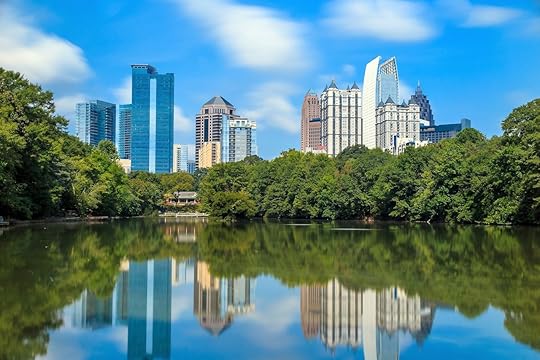
Take enough flights around North America and it’s inevitable that you’ll pass through Atlanta on a frantic connection. Venture from the terminal and you’ll see the skyline spiraling up out of the dark green thicket, which earned this city the locals-approved nickname “The City in a Forest.” With a nation-leading 48 percent tree cover, Atlanta’s shady forests offer plenty of opportunities to escape from the everyday hustle of the unofficial (but also locally endorsed) capital of the South. But for a city known for its greenery, visitors rarely get past the world-class museums and diverse restaurant scene. Heat and humidity be damned, Atlantans know there’s a lifetime of rolling rivers, singletrack trails, and placid lake coves to explore. Here are six outdoor adventures to try on your next trip.
Way down yonder on the Chattahoochee, a river runs through it

Photo: BluIz60/Shutterstock
It may seem like Atlanta doesn’t have a hallmark body of water, but the Chattahoochee River punches above its weight. Starting in the North Georgia mountains, the river hits its stride in Metro Atlanta where you can catch trout in the morning, shoot some rapids in the afternoon, and grab cocktails along its banks at sunset. The 48-mile stretch through Chattahoochee River National Recreation Area has a few great paddling options. For a quiet, half-day canoe trip, put in at Abbott Bridge and take out just past the easy, Class 1 rapids at Jones Bridge. Closer to downtown Atlanta, Powers Island to Paces Mill is a classic half-day summer float with friends. Set your own shuttle and bring your own tube, or for about $25, local outfitters like High Country Outfitters will do the work for you. The Class 1 and 2 rapids offer a good excuse to flip, just try not to spill your beer.
The Silver Comet Trail is a new-age homage to Atlanta’s railroad past

Photo: Jack schiffer/Shutterstock
Atlanta was built on the success of railroads, and today that history is never more evident than on a bike. All across Georgia, historic rail lines are being repurposed as bike trails, including the chic Atlanta Beltline and the underrated Silver Comet Trail. The paved, 61-mile Silver Comet Trail starts outside of Atlanta’s perimeter highway (“OTP” to locals) and heads west. The most interesting section of the trail is the 15 miles between Dallas and Rockmart, where cyclists cross the Pumpkinvine Creek Trestle into Paulding Forest Wildlife Management Area and then pass through the Brushy Mountain Tunnel. If you’re looking for a harder ride, bring your camping gear and keep pedaling west into the hills, which climb up to the Appalachian Mountains in Alabama’s Talladega National Forest.
Views abound from the slopes of the Arabia and Panola mountains, crowds not included

Photo: Isaenko/Shutterstock
The view from Stone Mountain is good, if you can get past the crowds, Civil War carvings, and the gondola. Luckily, the Atlanta area has plenty of small mountains, each with their own character. South of Stone Mountain is Arabia Mountain National Heritage Area, a National Park Service-designated region. The 955-foot Arabia Mountain was historically a quarry. Now you can hike a gradual 2.5 miles to the top, ending with views of Atlanta and a sea of Piedmont forest. Nearby Panola Mountain is also in the National Heritage Area. Sign up for a half-day tour of Panola and its ecosystems led by a state park ranger. It’s the only way you’re allowed up to the top, plus you’ll learn about all of the endangered plants and animals that call these granite monadnocks — isolated bedrock hills — home. A word to the wise: If you must hike these mountains in summer, plan to go early or late, unless you’re a fan of sweating through your clothes in the first half-mile.
Start SUP-ing in the calm waters of George H. Sparks Reservoir

Photo: BluIz60/Shutterstock
There’s a wealth of big lakes near Atlanta, but the small George H. Sparks Reservoir in Sweetwater Creek State Park remains a hidden gem. The 215-acre lake allows only non-motorized boats, so it’s the perfect place to spend a couple of hours getting acquainted with balance on a stand-up paddleboard (or SUP, for those in the know). The park rents out equipment, or you can launch your own stand-up paddleboard from the park boat ramp. Go whichever direction interests you, although make sure to head through the tunnel at some point. On the other side, you’ll find the marshy north end of the reservoir, which has fewer visitors and more wildlife.
Shred some Southern, red-clay singletrack
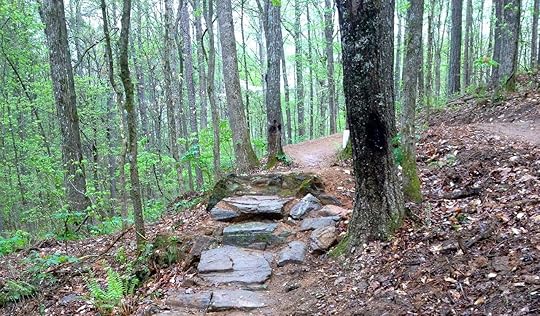
Photo: Sorba Woodstock/Facebook
Mountain biking has exploded around the country, and Atlanta is no exception. For a quick fix, the Southside Park trails are the only purpose-built mountain bike trails on Atlanta property. If you’re a beginner, you’re in luck. Southside Park trails are a great entry to the sport, but experts can expect some gnarly additions to the trail system down the road. These trails are being built by the same trail builders of the 16-mile network at Blankets Creek. Check in with the Southern Off-Road Bicycle Association (SORBA) for trail status. Only 30 minutes north of Atlanta, Blankets Creek is worth the drive for experienced bikers looking for more of a challenge than can be found at Southside Park. Don’t underestimate these trails just because they’re not in the true mountains; there are plenty of hills, rocks, and roots. Best of all, the trails are by the water, so be prepared to take a dip to cool off after your ride.
Get a grip at Atlanta’s best boulders

Photo: Wall Crawler Rock Club/Facebook
Atlanta has a handful of state-of-the-art indoor climbing gyms like Wall Crawler Rock Club. For most, indoor climbing is the extent of their climbing adventures. If you’re looking for more, head outdoors to one of the many bouldering spots along the Chattahoochee River. Boat Rock is a classic destination for both new and experienced climbers, with over 100 boulder problems ranging from easy to hard. For climbers, Boat Rock is a haven amid the sprawling Atlanta suburbs. But Boat Rock is hardly the only worthy climbing destination near the city. A smattering of rock is protected in Chattahoochee National Recreation Area, including beginner-centric bouldering at Island Ford and the Palisades. If you have some time to explore, Atlanta’s forests have a lot of rock waiting for you to find and climb. 

More like this: The best hiking trails near Atlanta
The post 6 outdoor adventures in and around Atlanta appeared first on Matador Network.

Global Climate Strike marchers

The Global Climate Strike marches are underway today, with millions of people around the world taking to the streets and marching to demand world leaders act on the climate change emergency. Most notably, high school students from all corners of the planet, inspired by the weekly strikes of Swedish teenage climate activist Greta Thunberg, are skipping school to participate in the marches. USA Today reports that over one million New York City students were excused from class to participate in the march.
The protests began in the Pacific and continued throughout the world as the sun came up, from Australia (with over 100,000 marching in Melbourne alone) to India, Pakistan, Afghanistan, Kenya, Germany, Norway, and more. Protests are expected to take place in over 156 different countries. Estimates say 270,000 people protested in Berlin, 100,000 in Hamburg, 100,000 in London, and 400,000 in Australia.
View this post on InstagramA post shared by Greta Thunberg (@gretathunberg) on Sep 20, 2019 at 9:25am PDT
Sixteen-year-old Greta Thunberg, who started the movement of Friday school strikes and teenager activism against climate change in 2018, was a major motivating force behind the protests. In April this year, in a speech to the European Parliament in Strasbourg, France, she compared the devastating Notre Dame fires to the plight of our planet. “I want to make you panic, I want you to act as if your house was on fire,” Reuters reports her saying. “A lot of politicians have told me that panicking does not do any good. I agree, but when your house is on fire and you want to prevent it from collapsing, it is better to panic a little.”
Strikes will take place today and again on Friday, September 27. You can find or register your local strike at fridaysforfuture.org. 

More like this: These 5 major cities are sinking rapidly into the sea
The post Millions around the world march in Global Climate Strike appeared first on Matador Network.

Cruise ideas for swingers

Hooking up with strangers on cruise ships isn’t just for singles anymore.
In fairness, it hasn’t been for some time, but after the raging popularity of its “adult lifestyle” cruises, where open-minded couples can meet with other open-minded couples to do open-minded things, Desire Cruises has opted to expand its water-bound offerings for 2021, taking the action to Europe.
Desire Lisbon will sail round trip from June 5 to 13, with port calls in Madeira, Portugal; Tenerife and Lanzarote in the Canary Islands; and Gibraltar, a slice of the United Kingdom in southern Spain. It will be a chartered ship on a cruise line that has yet to be announced, and will be geared toward couples only.
Later in the year, Desire Rome-Athens will sail from October 9 to 16, leaving from Rome and stopping in Sorrento, Italy; Siracusa, Sicily; Kusadasi, Turkey; and the Greek islands of Santorini and Mykonos, before culminating in Athens.
So what makes these cruises all that different from other cruises? Well, like any theme cruise, they draw people heavily invested in a certain interest or lifestyle. Sometimes that means spending a week listening to Bon Jovi. Sometimes it means jacuzzi lounges, clothing-optional areas, and playrooms where couples can, as Desire said in its press release, “expand, experiment, and enhance their sexual freedom in a surreal atmosphere.”
This, we assume, means playing copious amounts of cribbage and swapping pictures of your pet schnauzer. But it’s open to interpretation.
There will also be theme nights, couples’ workshops, and aphrodisiac-inspired menus to get things going.
In addition to the couples-driven Desire Cruises, Temptation — Desire’s sister resort in Riviera Maya, Mexico — will sail the second iteration of its massively popular Temptation Caribbean Cruise from February 11 to 16. As any topless-optional operation would, it will begin in Tampa, Florida, then sail to Key West and Riviera Maya.
As opposed to the couples-only Desire cruises, the Temptation cruises are open to singles, groups of friends, or pretty much anyone who wants to spend a week on a ship with tantric workshops and an R-rated red room. The atmosphere is more party-driven than romantic, a little like Yacht Week with a better female-to-male ratio.
All three are all-inclusive and include deluxe beverage packages, or premium beverage packages on Desire Cruises.
So while you’ll still find plenty of other fantastic cruising options in 2021, only a handful of journeys will be this kind of surreal trip into the sexual sublime. Maybe you and bae are looking to dip your toes into something new. Maybe you’ve taken your last nine vacations to a swingers resort like Hedonism in Negril, Jamaica, and are looking to branch out. Either way, these are sure to be the sexiest cruises of the year. 

More like this: The best vacation spots for sexually daring couples
The post Three new swingers cruises are setting sail in 2021 and they’re the perfect sexy vacations appeared first on Matador Network.

US has lost 3 billion birds

The extinction crisis is happening, whether we want to hear about it or not, and no creature is spared. According to a new study published in the journal Science and conducted by the Cornell Lab of Ornithology, the bird population in the US and Canada has declined by 2.9 billion breeding adults since 1970. Birds across every biome have been affected, with forests alone losing one billion birds.
The greatest losses have been suffered by common birds, which people see every day. Over 90 percent of the losses come from 12 bird families, including sparrows, blackbirds, warblers, and finches. The red-winged blackbird, for example, commonly seen in every marsh across the continent, has declined by a staggering 92 million birds.
Ken Rosenberg, a conservation scientist at the Cornell Lab of Ornithology, said, “We were astounded by this net loss across all birds on our continent, the loss of billions of birds. These bird losses are a strong signal that our human-altered landscapes are losing their ability to support birdlife. And that is an indicator of a coming collapse of the overall environment.”
There is some good news, however. The study shows that birds that have been the target of conservation programs are doing extremely well, among them are raptors, waterfowl, and turkeys — when we get involved to save bird species, we succeed. And as Rosenberg pointed out, even if 30 percent of North America’s birds are lost, there are still 70 percent left to initiate a recovery, given the implementation of proper conservation methods. But we have to act quickly, he said, because “that may not be true 10 years from now.” 

More like this: Millennials are super into birding now. Here are the best places to go birding around the world.
The post The US and Canada have lost 3 billion birds since 1970 appeared first on Matador Network.

What to do in Distillery District

Toronto is Canada’s most populous city, attracting people from around the world. This attracts plenty of developments, making it easy to skip over the historic parts of the city. But it’s well worth it to take a step back from the glitzy high-rises and the race for success for a charming look at the city’s past in Toronto’s Distillery District. Almost 200 years old, the area is home to the largest collection of Victorian industrial architecture in North America, as well as a National Historic Site of Canada.
Although the Distillery District is compact, it is not small, housing more than 40 heritage buildings on its 10 streets. The buildings have been carefully restored over the years, maintaining much of the original structures and repurposing materials to create an ideal balance of old and new. At its peak in the mid-1800s, the Gooderham and Worts distillery was the largest in the world, and the district still holds onto some of this booze-fueled history. Among the many offerings of the area, a local brewery, a sake company, and a distillery keep the district true to its name. Since 2003, the Distillery District has been open to the public in its current form, proving itself a dense pocket of culture, art, gastronomy, and more.
There are things to do year-round in the Distillery District. In warmer months, sit outside at one of the many patios and visit the Sunday market. In winter, the Christmas market takes over the district and Toronto’s Light Festival brightens up the snow-covered streets. Whenever you choose to visit Toronto’s Distillery District, you can be sure to find something to keep you entertained. It’s pedestrian-only, so wear a good pair of walking shoes and check out these historic spots.
Public art installations in Toronto’s Distillery District

Photo: Marc Bruxelle/Shutterstock
Different events take place in the Distillery District throughout the year, bringing new artists and their work to the public space. Large installations, sculptures, and interactive displays are all part of the ever-changing pieces in the streets of the district. Among the largest and most popular include “Still Dancing” from artist Dennis Oppenheim, which is located near Balzac’s Coffee Roasters. Another crowd favorite is a giant monster-looking sculpture originally created for display at Burning Man called “Koilos.” Toronto has a knack for offering a permanent home to Burning Man-inspired art, as the nearby sculpture “I.T.” by Michael Christian was also adopted from the festival. And you’ll inevitably pass the “LOVE” sign, one of the most Instagrammed spots in the entire city.
Where to eat in the Distillery District

Photo: Gilberto Mesquita/Shutterstock
There’s no shortage of food in the Distillery District. Stop by Wildly Delicious, which has plenty of choices from just about every corner of the world. A cafe and deli counter with sandwiches, salads, soups, drinks, and more is great for a quick meal. The rest of the shop is filled with artisan food products, books, and kitchen tools. It’s the perfect place to stop for a snack and some gourmet finds.
For those with a sweet tooth, an easy choice is SOMA Chocolatemaker. Handcrafted, high-quality chocolate and gelato are made at the on-site chocolate factory. The raw cacao beans are mostly sourced from South and Central America, and are roasted and processed into the final chocolate product at the bean lab. Chocolate tasting is a must, and the assorted packages make great gifts to pack into your luggage — whether it’s a gift or for your later indulgence.
The cozy space at Brick Street Bakery is the ideal showcase of the District’s handcrafted ethos. The choices of baked goods range from savory to sweet, flaky to solid. All are homemade with organic flour. Not only are there enough baked goods to keep you coming back daily, lunchtime classics such as soups and sandwiches are also sold. Brick Street Bakery is a great spot for a coffee and a bite before exploring further.
Where to drink in the Distillery District

Photo: Gilberto Mesquita/Shutterstock
Staying true to the origins of the district, the Spirit of York distillery invites the public in for a closer look at the products crafted. The visible equipment allows customers to see first-hand the steps of the distillation process alone or through a guided tour. The tasting room is open daily and the sleek decor focused around a central bar adds a special touch to the experience. If distilled liquor is not your first choice for alcohol, check out Mill Street Brewery, the home of Ontario’s first organic beer, or Izumi, a sake brewery that started in 2011.
The neighborhood is also lined with cafes and pubs where you can enjoy a drink and a bite on the patio (in summer, at least) and many feature local craft brews on tap.
Peruse the Distillery District’s art scene

Photo: Joyce Nelson/Shutterstock
There’s no better place to view art than in the studio while interacting with the artist. Artscape Distillery Studios is a nonprofit organization that redevelops heritage buildings into studios for artists. The Case Goods Warehouse is one of these spaces, hosting over 50 studios and retail options. Photographers, painters, jewelers, theater groups, and furniture makers are just some examples of the creative expression on display. Artscape frequently hosts events and art shows, a unique chance for locals and tourists to mix and converse with the artists firsthand. The weekly farmers market happens every Saturday from 8:00 AM until 12:30 PM, where you can not only peruse the art, but also grab a bite and check out locally made goods as well.
Live performances in the Distillery District
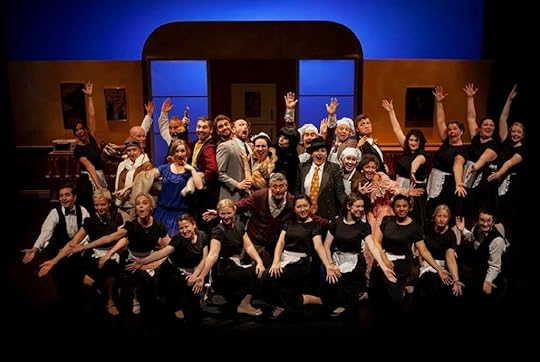
Photo: Nightwood Theatre/Facebook
When it comes to performances, there is no better place than the Young Centre for the Performing Arts. Theater companies, choreographers, dancers, poets, musicians, and other artists use the space to educate and share creative talent with audiences. Shows happen throughout the year in multiple venues inside the space. Beyond the confines of the Young Centre, the Ernest Balmer Studio hosts performances often put on by the feminist theater company Nightwood Theatre. 

More like this: The most diverse city in the world also has the most exciting food market
The post Toronto’s Distillery District is the ultimate hub for craft culture appeared first on Matador Network.

September 19, 2019
Underrated US cities for street art
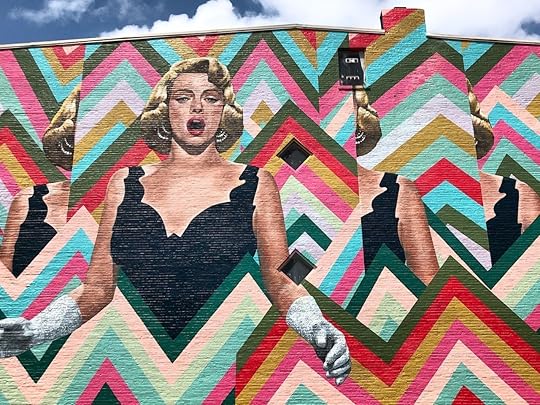
Step aside, stuffy art museums — street art has taken over the nation as the most important contemporary art movement of our time. What began as a subversive form of art about 40 years ago is now, in many urban areas, city sanctioned. Earlier this year, Chicago even launched a mural registry dedicated to protecting the city’s prolific public paintings.
Thanks to the popularity of the mural movement, once-derelict streets in Brooklyn and Los Angeles have turned into free open-air galleries, and places like Wynwood in Miami and Eastern Market in Detroit have garnered critical acclaim for their artsy alleyways. But these aren’t the only places promoting street art in America. Here are 11 spots in the United States that recently started turning their grey walls into blank canvases. These under-represented street art scenes are quickly transforming America’s lesser-known urban areas into tourist destinations and cultural centers worthy of global praise.
1. Oklahoma City, OK
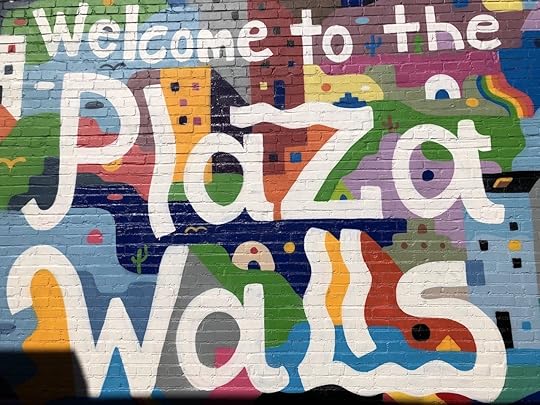
Photo: John Garry
From down-and-out neighborhood to modern-art hub, Oklahoma City’s trendy Plaza District is proof of public art’s transformative power. Only a decade ago, the alley at 1739 Northwest 16th Street was a place locals avoided. Now, it’s a top tourist destination, largely thanks to local artists Dylan Bradway and Kristopher Kanaly. In 2015, the duo launched the Plaza Walls mural project, an outdoor exhibition that hosts a rotating roster of work by top-tier street artists. With the help of local painters, Bradway and Kanaly turned the crime-ridden alley into an outdoor museum.
The critical element of Plaza Walls’ success is its celebration of community. One of the most coveted wall spaces, on 16th and Indiana Avenue, is painted fresh by a different mural master every month. This gives new artists a chance to share their work and onlookers a reason to return to the scene.
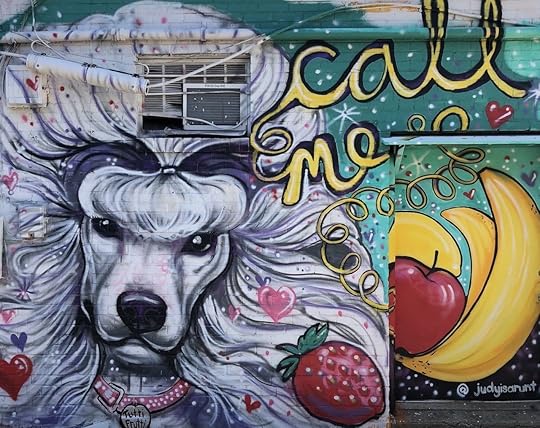
Photo: John Garry
The Plaza District isn’t the only OKC neighborhood to embrace the street art movement. Film Row, a trendy area adjacent to the Arts District, is home to a bunch of colorful walls, including a massive portrait of the Thunder’s star basketball player, Steven Adams, painted by Mr. G (aka Graham Hoete) on 701 W Sheridan Avenue. Midtown and Automobile Alley are areas worth checking out as well, particularly for Victor Ving and Lisa Beggs’ “Greetings from OKC” at 301 NW 10th Street. The duo has painted 41 “Greetings from…” murals in 20 different states, all celebrating the culture of local towns in postcard-style paintings.
2. Sacramento, California
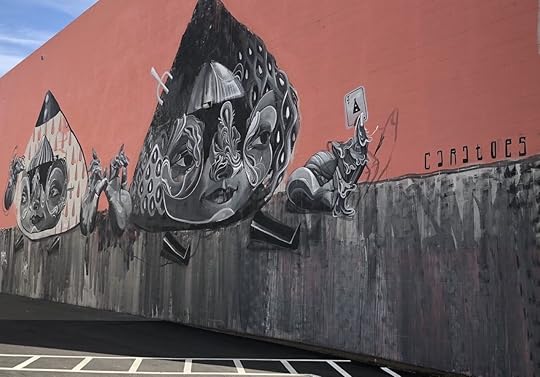
Photo: John Garry
For a long time, Sacramento was a nowhere town overshadowed by its urban neighbor to the west, San Francisco. But as the price of living continues to push people out of SF proper, nearby areas are starting to spring up as hamlets for those seeking refuge from continually rising rents. Sacramento is one of those havens. The most visible expression of this change is in the nascent street art scene taking place in Sacramento’s Midtown.
In 2016, the Wide Open Walls project began as a way to transform Sacramento’s sleepy city into an eye-popping tourist destination. With over 80 murals painted by local and international artists, and an annual festival that attracts 4,000 yearly visitors, the project has been an enormous success.

Photo: John Garry
For a self-guided tour of Midtown’s murals, stick between K and I Streets and 15th and 25th Streets. You’ll find the best work, including pieces by Caratoes, Okuda, and Pixel Pancho in this area. A great place to start is at Maren Conrad’s love letter to the movie Lady Bird on 16th & I Street. Walk over to K Street to see the sky-high mural by NYC artists How & Nosm, and then weave your way eastward toward 22nd Street to admire even more.
3. Dallas, Texas
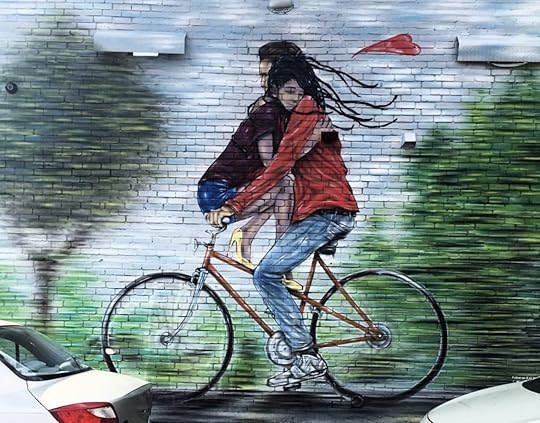
Photo: John Garry
In Dallas, commuting by car is a necessary part of local life, but just off the I-75, the sidewalks of Deep Ellum are pulsing with the beat of pedestrian feet. It’s easy to see why people choose to walk instead of drive in this funky arts district. The walls of this neighborhood — home to trendy boutiques, live music venues, and delicious restaurants — form an outdoor art gallery that you’ll miss if you don’t put your sneakers to use.
In 2009, the Deep Ellum Mural Project began painting Deep Ellum’s dull industrial buildings with site-specific street art. Since then, it has turned over 8,000 square feet of wall space into artwork for the community to enjoy. On top of that, the 42 Murals Project, which began in 2012, commissioned 42 Texan muralists to decorate even more of the neighborhood’s walls. The result of both projects is a maze of colorful streets that promote a community-oriented vibe.
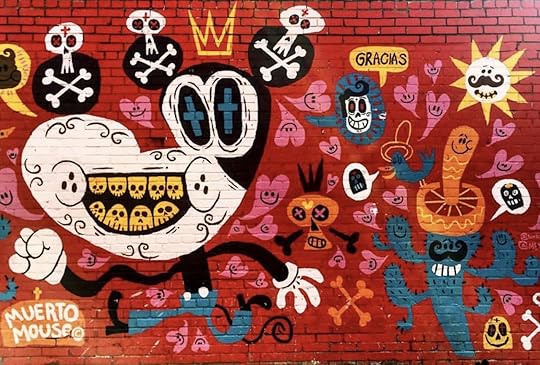
Photo: John Garry
The majority of the area’s best murals can be seen by weaving around Canton, Commerce, Main, and Elm Streets between Good Latimer Expressway and Exposition Avenue. Head to 2913 Elm Street to get a whole parking lot’s worth of love from the enormous “I Love You” mural. Check out Jerod Davies’ “#trustlove” painting of lovers on a bicycle at 2653 Main Street. Jorge Gutierrez’s Mexican-themed cartoons on 2801 Elm Street and Mike Cruz’s Frida Kahlo skeleton head on 2810 Main Street celebrate the city’s Latinx community.
4. Reno, Nevada

Photo: John Garry
Reno is often overshadowed by the glitz and glam of Las Vegas. The casinos are older and the winters colder than what you’ll find in Sin City. Lax divorce laws made Reno famous in the first half of the 20th century, and it wasn’t uncommon to get hitched in Vegas and call it quits here. Las Vegas was built on dreams; Reno was where those dreams went to die.
Today, all that has changed — Reno is now where dreams blossom into public art pieces. A gateway for people passing to and from the popular annual Burning Man festival, this kitsch-tastic town is regularly inundated with contemporary artists and their admirers. As a result, the city has become a gathering place for the Burners, and the large-scale art installations and site-specific murals they’re bringing with them are turning this dusty Nevada city into street art central.

Photo: John Garry
You’ll find a ton of artwork downtown on Virginia Street between the Truckee River and East 9th Street. Head to East Plaza and Virginia Street to see Reno native Erik Burke’s “Blueprint of a Mother,” a six-story high portrait of a woman decorated in mountains and flowers. Walk in and out of nearby alleys for other great works, and keep an eye out for Joe C. Rock’s mural of his mother’s arm at 210 North Sierra Street. The Playa Art Park on North Virginia is another excellent area to see Reno’s Burning Man-inspired public works. The park, flanked by two long murals, is filled with sculptures created by Burners during their Black Rock Desert bash.
5. Denver, Colorado
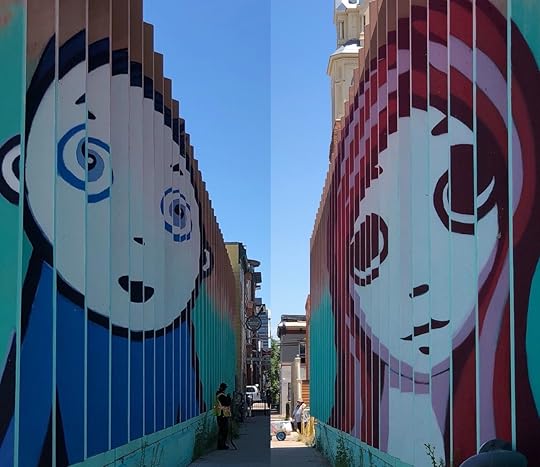
Photo: John Garry
The only thing that seems to match Denver’s exponential population growth in recent years is the city’s prolific street art scene. Over the past decade, much of the town has become a canvas for photo-worthy wall scrawls and murals. You can spot them while whizzing down the Cherry Creek Trail bike path, near galleries in the Art District on Santa Fe, and around nightlife venues on East Colfax Avenue. No area, however, is more kaleidoscopically spectacular than a section of the River North Art District (RiNo) on Larimer between 20th Street and 37th Street.
RiNo’s explosively colorful streets are thanks to Crush Walls, an arts initiative began by Robin Munro in 2010 to showcase the work of both local and international muralists. Every September, the organization throws a week-long festival featuring new murals both in RiNo and around the city. The organization is celebrating a decade of urban beautification this year, and its influence on Denver is evident. With over 100 murals to see, RiNo’s free open-air gallery has turned the neighborhood into a must-visit destination. As a result, hip beer halls, food markets, and boutique shopping have sprung up around the once-defunct area.
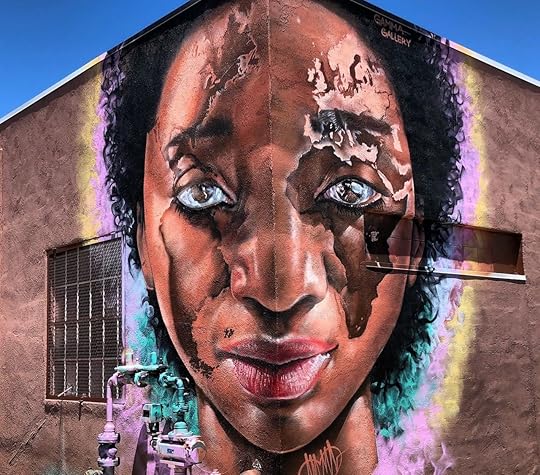
Photo: John Garry
Stroll through Art Alley to spot the glut of RiNo’s greatest work, or hop on a Bird scooter and glide through the many murals between Art Alley and Larimer Street. One of the most ingenious works is Jeremy Burns’s “Larimer Boy and Girl” on 27th and Larimer. The two-sided piece uses a building’s concrete fin panels to create a double portrait that changes depending on which side of the street you walk down. Other notable works include local artists Pedro Barrios and Jaime Molina’s five-story-high mountain man on 3201 Brighton Boulevard and GAMMA’s expertly executed “Skin Condition” on 31st and Larimer.
6. West Palm Beach, Florida

Photo: John Garry
It’s easy to assume the cities of Palm Beach and West Palm Beach are the same principality. Travelers must, after all, pass through one to get to the other. But while Palm Beach is home to Mar-a-Lago and everything it entails, West Palm Beach is home to the revolution, evidenced by the many murals that have sprouted up around the city in recent years.
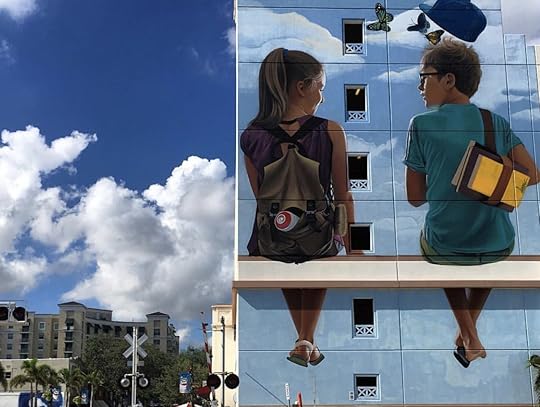
Photo: John Garry
There’s no doubt that West Palm Beach has been influenced by Wynwood’s outdoor art scene. Just an hour south along Florida’s eastern seaboard, Wynwood is a Miami neighborhood internationally respected for its murals. In recent years, a significant number of its muralists have spilled over to the streets of West Palm to bomb the town’s walls with their beautiful works. Brazilians Kobra and Sipros, Los Angelinos Tristan Eaton and WRDSMTH, and Croatian-based artist Lonac are only a few of the many acclaimed artists responsible for the public art scattered about town. Most of these works are thanks to CANVAS, a program at the forefront of turning West Palm Beach into an open-air art show since 2015. The bulk of CANVAS’s commissioned pieces can be seen in the Arts and Entertainment district, concentrated around Clematis Street between South Quadrille Boulevard and South Tamarind Avenue.
7. Cincinnati, Ohio
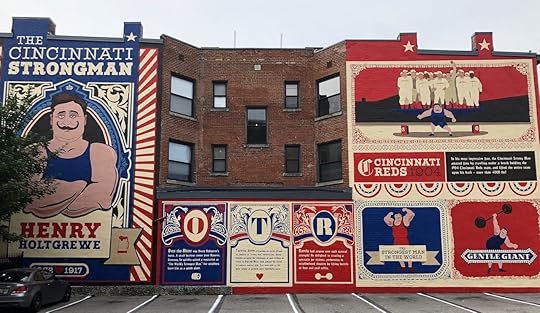
Photo: John Garry
Only a decade ago, Cincinnati’s Over-the-Rhine neighborhood was a place locals avoided. Thanks to recent revitalization efforts, it has once again become a place to enjoy. The proliferation of street art has played a large part; the OTR has been reborn as one of the country’s must-visit hubs for mural lovers.

Photo: John Garry
The most inspiring part of Cincinnati’s street art renaissance is that it’s genuinely a community-oriented endeavor. Murals are mainly Cincinnati-themed, showcasing famous locals (like Rosemary Clooney in a mural painted by Natalie Lanese at 1606 Pleasant Street), city folklore (like “The Cincinnati Strong Man: Henry Holtgrewe,” immortalized by Jason Snell at 1215 Vine Street), and local celebrities (like Martha, the world’s last passenger pigeon, which spent her final days in the Cincinnati Zoo, painted at 15 East 8th Street.) They also incorporate the talents of the local community. Even work by international artists (like Kobra, whose mural of Neil Armstrong can be seen on East 6th and Walnut Street) employs the hands of local teens, who learn from the mural masters as a part of the city’s ArtWorks program. Cincinnati’s 100-plus murals is one of America’s best examples of art by the people for the people.
8. Washington, DC
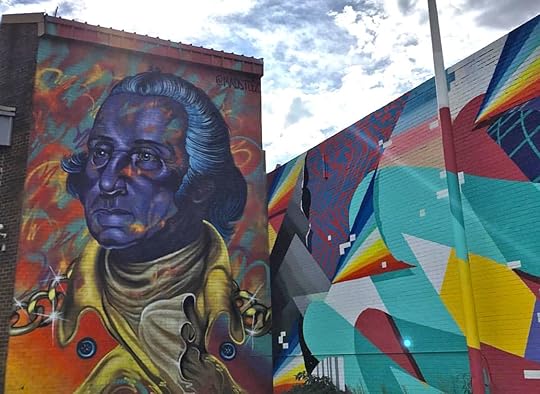
Photo: John Garry
Washington DC’s no-fee Smithsonian museums serve as shining examples of American art and are some of the highest-regarded and often-visited museums in America. DC’s street art, on the other hand, may seem incongruous in a city stereotypically known for its pure white walls and suit-and-tie inhabitants. This juxtaposition is what makes the vibrant mural scene here unique — and it’s a welcome surprise.
The clash of Washingtonian elegance and urban art is most evident at Blind Whino (700 Delaware Avenue Southwest). A former Victorian-style church, Blind Whino is now an arts center painted by the muralist HENSE. The building’s colorful walls are a striking sight mere blocks from the National Mall’s white-marble monuments.
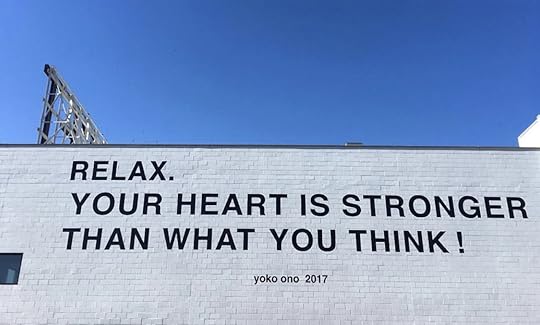
Photo: John Garry
You’ll find over 100 noteworthy murals sprinkled around DC, but the highest concentration is in the Shaw and NoMa neighborhoods. Blagden Alley, located in Shaw, is home to a dozen rotating murals that wind through the backs of brick carriage-houses filled with beer halls, coffee shops, and restaurants. Union Market, located in NoMa, is surrounded by blocks covered in street art and grittier graffiti. Pieces range from a Hirshorn-curated black-and-white message designed by Yoko Ono and located on the side of the market — “Relax! Your Heart Is Stronger Than What You Think!” — to a building-sized portrait of George Washington at nearby 33 North Street Northeast. Painted by Mark Paul Deren, this acid-tripping rendition of America’s first President is at the antipode of Washington’s portrait hanging in The National Gallery.
9. Eugene, Oregon
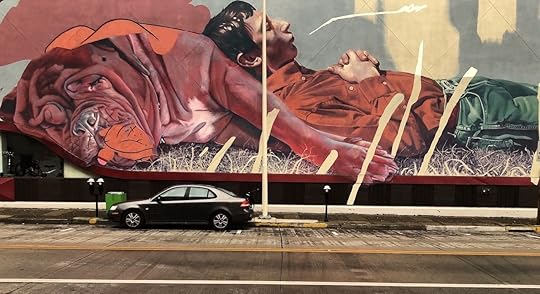
Photo: John Garry
Located an hour-and-a-half south of Portland in Oregon’s Willamette Valley, Eugene shares quite a bit with its “weird” sister city to the north. They’re both hippy-loving college towns with easy access to nature, their very own Voodoo Donuts shops, and globally recognized art scenes. Sure, Eugene may be much smaller in scale, but the contemporary art scene here, undoubtedly influenced by nearby Portland, has recently upped the ante on its wow factor. You’ll find pieces by street artists like Blek le Rat (France), Hush (United Kingdom), Telmo Miel (Netherlands), and Shamsia Hassani (Afghanistan’s first female street artist) all over Eugene’s pedestrian-friendly downtown.
The recent explosion of murals is mostly thanks to the 20×21 EUG Mural Project, which began in 2015. An initiative created by the City of Eugene’s Public Art Program, the project is inviting world-renowned artists to paint 20 new murals around the city before the year 2021. Urban Canvas, another public arts initiative in the city, aims to offer opportunities for local artists interested in creating murals.
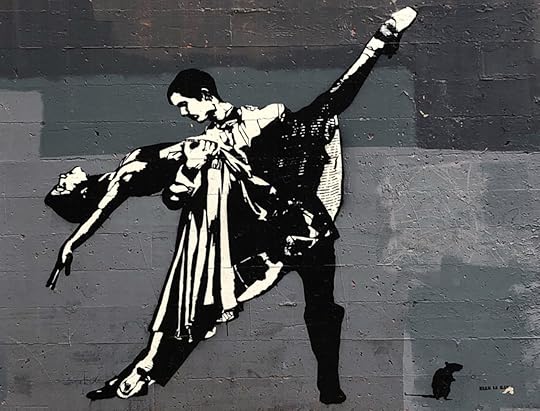
Photo: John Garry
Head over to 100 East Broadway to see some of Blek le Rat’s paste-up pieces. The granddaddy of modern stencil art used by artists like Banksy, Blek le Rat’s subtle black-and-white works are some of the most quirky in town. You’ll find other great murals by winding down Willamette Street between 7th and 14th Avenues.
10. Richmond, Virginia
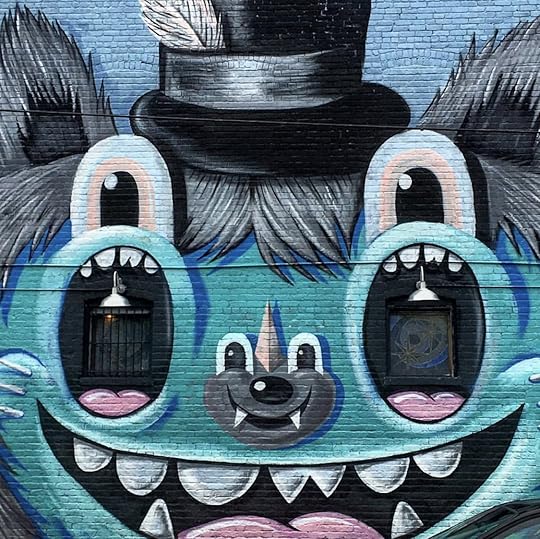
Photo: John Garry
When it comes to street art, Richmond ranks next to big-name cities like New York and Los Angeles. Modern murals fill entire city streets, providing a poetic juxtaposition to the Revolutionary War-era architecture scattered about town.
The massive amount of public paintings is thanks to two arts organizations: the RVA Street Art Festival and Richmond Mural Project. The Street Art Festival, which began in 2012, brings local artists and students to neglected areas of Richmond and beautifies them with murals. The festival has turned a bus station, old grain silos, and even the city’s floodwall into public art. The Richmond Mural Project, founded by Shane Pomajambo in 2012, brings the world’s greatest artists to Richmond’s city streets. In the first five years, the project created over 100 murals by the medium’s top talents and continues to host internationally respected street artists at its annual events.

Photo: John Garry
If you want to see tons of murals on foot, the three best places to explore are along West Main Street in the Fan District (keep your eyes peeled for Aryz’s purple elephant and Greg Mike’s furry blue monster), on West Cary Street in Carytown between Arthur Ashe Boulevard and South Thompson Street, and along the Canal Walk near Shockoe Bottom.
11. Atlanta, Georgia

Photo: John Garry
Atlanta is arguably the cultural capital of the South. The city is home to a thriving film industry, an award-winning food scene, and public green spaces that have garnered national praise. Most recently, the Big Peach has added beautiful murals to its artistic scene, transforming the city into a big canvas for contemporary art. Thanks to many mural festivals and a growing number of internationally recognized local artists organizing them, Atlanta now gives street art cities like Chicago a run for their money.
There are so many wall-scrawled neighborhoods in Atlanta that it’s hard to pick a favorite. If pressed for time, though, you should check the murals along the BeltLine’s Eastside Trail, a pedestrian-only pathway that runs from Midtown to Reynoldstown. The path features about a dozen paintings, including pieces by HENSE, Kyle Brooks, and Karen Anderson, whose whimsical tiny doors can be spotted all over the city. Krog Street Tunnel, mere feet from the BeltLine, is also a worthy stop. The graffiti-strewn passage attracts people from all walks of life who are intrigued by its continually changing public canvas.
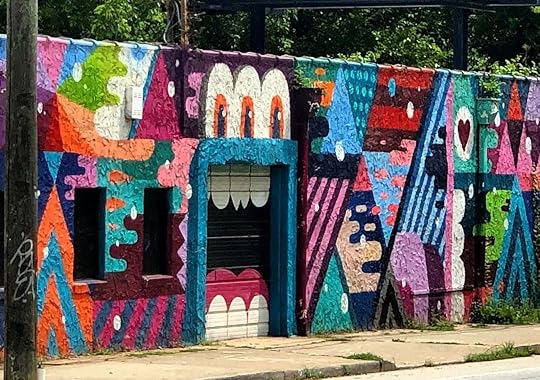
Photo: John Garry
Aside from the trail, the industrial buildings of Cabbage Town and Inman Park are home to an endless array of murals. Head to Edgewood Avenue and Krog Street to see a few pieces by Atlanta-based artist Greg Mike. There’s plenty of art along Glen Iris Drive Northeast in the Old Fourth Ward, and the busy strip of Little Five Points is painted in all sorts of bright colors, too. Perhaps the most Insta-worthy mural outside of these neighborhoods is the “Atlanta” mural on the corner of Baker and Marietta near the Georgia Aquarium. 

More like this: Kiev is an amazing hub for street art — and these are the best murals in the city
The post 11 American cities with surprising street art scenes appeared first on Matador Network.

Best lake regions near Toronto

Canada may be known for its cold winters and expansive landmasses, but it has so much more to offer than just maple syrup and good hockey. For this, look no further than Ontario, a Canadian province dotted with pristine lakes and forests. There are over 250,000 lakes in the regions north of Toronto, some lined cottages (as summer cabins are known in this part of the world) and some not yet inhabited.
All the lakes have their own unique personality — whether it’s windswept cliffs or deep, trout-rich waters — and each lake has something special to offer. The region attracts people from all over the world, and for good reason. On your visit to Toronto, take the time to spend a weekend on one of these unforgettable bodies of water. While it’s impossible to go wrong when choosing where to go, here are the top four lake regions north of Toronto.
1. The Muskoka Region: wide-open water views
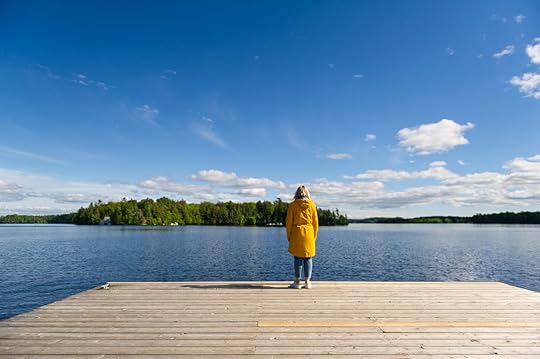
Photo: Alessandro Cancian/Shutterstock
The Muskoka Region is located about two hours north of Toronto, and it consists of three main lakes: Lake Muskoka, Lake Rosseau, and Lake Joseph. First explored in the early 19th century, Muskoka has transitioned from a time of steamships and fur trappers to speed boats and comfortable cottages.
Lake Muskoka, the biggest of the three, is found to the south of Lake Joe and Lake Rosseau. It’s known for calm, wide-open water views dotted with islands and embellished with sleek, antique boats racing past. Cottages range from the humble fishing shack to the much larger, Hamptons-style house.
Many attractions dot the almost infinite lakeshore, such as Kee to Bala, a concert house that has hosted the likes of Aerosmith, Duke Ellington, and Drake. Perhaps you’d want to take sailing lessons at one of the many sailing clubs, such as The Kettles or Beaumaris Yacht Club. It’s hard to go wrong in Muskoka. Whether you’re staying near Bracebridge, the largest town, or Bala, a small town on the eastern shore, there are activities for everyone on Lake Muskoka — from swimming and water-skiing to shopping and relaxing.
Located at the junction between Lake Muskoka and Lake Rosseau is Port Carling, dubbed the heart of Muskoka. If you get lucky while in Port Carling, you can hopefully see two of Muskoka’s resident steamships, the Wanonah and the RMS Segwun, the latter being the oldest continually running steamship in North America. Upon crossing into Lake Rosseau through the locks in Port Carling, you are met with long expanses of water that eventually touch the base of the dark green pine trees that rim the shore. Lake Rosseau is known for its islands and the cottages that so masterfully blend into its landscape.
To the east of Lake Rosseau is Lake Joseph or Lake Joe for short. More rugged than its two sister lakes, and known for its deep waters and exposed rock, Lake Joe is home to many celebrities and entrepreneurs. The cottages tend to be larger and more expensive than at Lake Rosseau and Muskoka, and some stand out as architectural masterpieces. If you’re staying on Lake Joseph, then you need to visit the Lake Joe Club for high-end dining and spectacular lakeside views.
2. Lake of Bays: serene, natural beauty
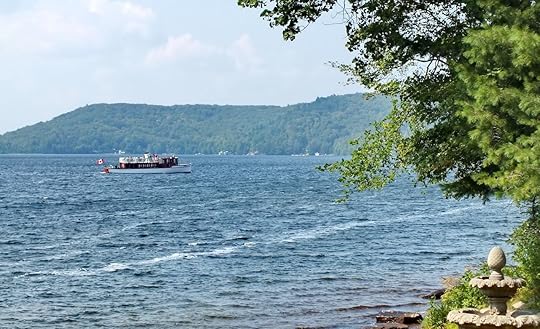
Photo: Bob Hilscher/Shutterstock
Lake of Bays is the perfect blend between a famous hotspot and a natural getaway. Located about 20 minutes east of the Muskoka Region — two and a half hours north of Toronto — Lake of Bays is named after its many inlets and tucked-away coves. For being such a famous lake, it’s remarkable how well the environment has been preserved. Lake of Bays is quite similar to the Muskoka Lakes although less crowded and more “natural.”
While Lake of Bays has its fair share of large cottages, most of the cottages are smaller and blend more masterfully into the surrounding nature. Boat houses are less common, so when you are looking out at the lake from your dock, the view is dominated by trees and a natural shoreline. If you’re into golfing, Lake of Bays may be the place for you. Lake of Bays is the home to the Bigwin Island Golf Club, an exclusive yet masterfully made course that offers views of the entire lake.
3. Parry Sound: rugged lifestyle
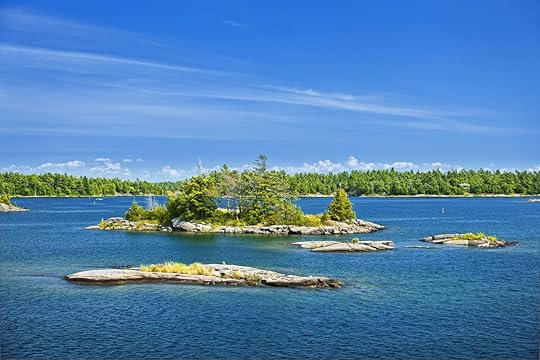
Photo: Elena Elisseeva/Shutterstock
The Parry Sound Region is for those who are willing to go a little further off the grid to get a more traditional cottaging experience. The region stretches from the tops of Lake Joseph to Lake Nipissing in the north and borders Georgian Bay to its east. This expansive district of glacier-scraped Canadian Shield provides the truly off-the-grid experience, or the typical modern cottage feel, and everything in between.
Known for its size, Georgian Bay is the most popular spot to visit in the Parry Sound area, and rightfully so. With its rugged features, Georgian Bay is vastly different from any other lakes in Ontario. Whether it’s the immense size of the lake, the amount of exposed, windswept rocks, or the thousands of unique islands that fleck the shore, Georgian Bay offers everything that any visitor would need.
If you’re looking for a more rugged experience, perhaps rent a cottage on an island and experience the harsh weather while you’re tucked inside with a fire and good company. Or perhaps stay on the mainland, where you can visit the town of Parry Sound and stop at one of the many bakeries famous for their butter tarts.
In the north part of the Parry Sound region is Pointe-au-Baril, meaning “point of the barrell,” where the lake becomes even more rugged with sharp cliffs soaring out of the almost immeasurably deep waters. It is impossible to go wrong with the Parry Sound Region, just make sure you’re up for a little bit of life off the grid.
4. Kawartha Lakes: close by but a world away
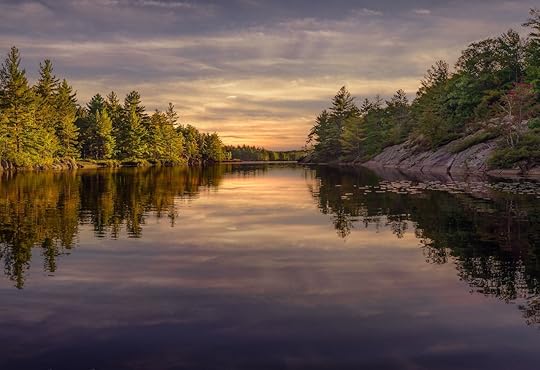
Photo: Travis Newbigin/Shutterstock
The Kawartha Lakes are multiple lakes situated just northeast of Toronto that are closer to the city than any other lake region on this list. In only an hour and 30 minutes, you could go from busy downtown Toronto to whichever of the Kawartha Lakes you’d like to visit. With more than 20 major lakes in the region, Kawartha Lakes has a lot to offer when it comes to activities, sights, and experiences.
While each lake is unique in its own right, they all have preserved the natural beauty of some of Canada’s most pristine lakes while still offering a great place to cruise on a boat, sail, or kayak. Because the Kawartha Lakes are often overlooked, some of the lakes are undeveloped and still offer a true retreat into the untouched wilderness.
One reason to make the short trek to the Kawartha Lakes is for the famous Kawartha Dairy Ice Cream, located in Bobcaygeon. If you’re not in the mood for ice cream, why not head out for a camping trip into the Queen Elizabeth II Provincial Wildlands Park, where you can hike along winding rivers while feeling like a true explorer. Or if you’re looking for a cool sight, head over to the Kirkfield Lift Lock, a marvel of engineering that lifts boats over 30 feet into the air. It is also the second tallest lift lock in the world. 

More like this: The 7 coolest things to do in Niagara Falls, other than see the Falls
The post Why you need to visit the incredible lakes near Toronto appeared first on Matador Network.

Matador Network's Blog
- Matador Network's profile
- 6 followers



